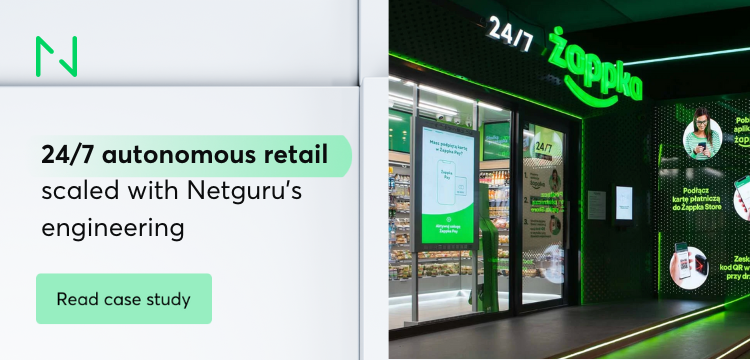Unified Commerce: Elevating Omnichannel Experiences

At its core, unified commerce represents a pivotal shift in how companies approach the convergence of physical and digital commerce. It transcends the boundaries that once separated brick-and-mortar stores, ecommerce platforms, mobile apps, and social media interactions. Instead, it brings these disparate channels together into a cohesive ecosystem, enabling businesses to provide a truly omnichannel experience.
But unified commerce is not merely about merging the front-end, customer-facing aspects of retail. It extends deep into the backend, encompassing data systems, supply chains, inventory management, and customer relationship management.
This holistic approach empowers businesses to not only meet their customers where they are but to anticipate their needs, adapt swiftly to market changes, and continuously enhance the overall shopping experience.
Unified commerce supports omnichannel journeys
Unified commerce is a set of solutions, processes, and systems to provide a seamless experience and consistent data. While omnichannel tends to stop after multichannel expansion and frontend alignment, unified commerce consolidates all your backend systems with your customer-facing channels via a single platform.
The unified commerce platform companies require in order to support omnichannel journeys and create a unified view of customer interactions, products, and management systems. Done right, unified commerce solutions provide a totally integrated, measurable, and frictionless experience — essentially what omnichannel was meant to be all along.
Unified commerce means your entire operation is built on a solid foundation that can adapt and scale with your business. On the frontend, it's about the customer experience, and on the backend it’s about data collection and data analysis. There are a number of tools that enable that, like various content management systems, or unified payment solutions like Adyen that consolidate all your payment systems and data across every channel.It’s not about offering an omnichannel experience to customers, but becoming an omnichannel business at the core.
Online and in-store experiences woven together
Unified commerce ensures that when a customer buys an item online and goes to return it in-store. With real-time communication between systems, a unified retail strategy ensures that your website reflects the real conditions in your brick and mortar stores, giving customers the enhanced flexibility they are looking for.
It’s worth keeping in mind though, that sometimes ecommerce and brick and mortar stores are legally attached to different entities. That’s why buying online and returning in-store, or vice versa, is simply not possible.
Now, let’s walk through a more complex unified commerce use case:
- You see a product on social media, let’s say, a cool, yellow fridge. You click on it, and get redirected to the retailer's website with the item already in your basket.
- You get distracted and abandon your basket.
- The next day, you pass the brick and mortar store and get a push notification encouraging you to finish yesterday’s purchase.
- You decide to enter the store. The assistant already has access to your abandoned basket and they know your history of adding products. They can see your past questions on live chat to understand what you’ve been struggling with. They also understand where in the purchasing process you’re at and can provide all the information that you’re lacking.
- You decide to make the purchase and pay via credit card.
- Your card is saved to your account and gets automatically charged.
- You get the goods delivered to your home the next day.
As you can see, a unified commerce strategy ensures consistency and flexibility across all sales channels. Not only does it provide customers with the greatest possible experience, but it also provides retailers with customer data and a 360-degree perspective of their customer interactions.
The 3 key pillars of unified commerce
So, now you’ve seen unified commerce in action, you’re probably wondering what a successful unified commerce approach looks like? During one of the Netguru Disruption Forum Retail, we sat down with Jakub Czerwiński, VP CEE at Adyen, to discuss just that.
Jakub believes unified commerce is all about blending multiple shopping experiences to enable a consistently seamless customer experience. “By being able to mix and match these three pillars in a completely flexible way, you can provide a customer-centric experience with no limitations by channel.”
Here are the three pillars he urges retailers to consider:
1. Where the purchase happens
“Where does the customer make the purchase of a product or service?” asked Jakub. This is pillar number one. With 67% of customers using multiple channels to complete a single transaction, and 85% of customers starting a purchase on one device and finishing it on another, it’s no surprise that being where your customers shop makes the buying experience more convenient, and boosts sales in the process.
In saying that, you don’t need to be everywhere to succeed. Jakub highlighted the importance of taking the time to think about what your typical customer journey looks like and how it can be enhanced with a unified commerce platform.
“Adidas, for instance, processes payments both online and offline via Adyen’s platform, which gives them the ability to fully utilize the unified commerce strategy,” explained Jakub.
“Customers can buy something online, return it in-store, yet still receive an immediate refund.”
Jakub Czerwiński
VP CEE at Adyen
2. Where the product or service is fulfilled from
Wherever your customers are in the world, giving them a consistent experience is crucial. “Where are your customers buying this product or service? And where is it shipped from?” asked Jakub. This is pillar number two.
“If you go into a store and they don’t have your size shoe, it's not a problem. Thanks to unified commerce, you can immediately order it from the counter in the store and have it delivered from the central warehouse close to your apartment the next day,” Jakub continued.
3. Where the transaction happens
“How does the transaction for the product or service happen? Does your customer pay in-store? On a mobile phone? On a web browser? Via a payment link?” asked Jakub. Every region has its preferred payment methods. That’s why making sure to accept payments from around the world from any relevant sales channels, device, or time zone is pillar number three.
What are the benefits of adopting a unified approach?
Let’s take a look at some key benefits of unified commerce:
- Improved customer experience: According to Ayden, 42% of customers prefer retailers who remember their shopping behavior and preferences. By seeing a customer’s shopping preferences and history across all channels, a unified commerce system makes it easier to exceed expectations and offer the personalized, seamless experience your customers are looking for.
- More relevant data: By tracking customer interactions in real-time and across channels, unified commerce helps retailers build a deeper understanding of their customers, and serve them better for it. Customer data helps retailers to give their customers what they want. 94 % of responding customers stated that a positive customer service experiencemade them more likely to purchase again.
- Better understanding of your business: It goes without saying then that by capturing consolidated data insights, unified commerce strategy provides a more accurate picture of your business. This makes it easier to predict and plan for the future and helps you to make better business decisions, too.
- Automation: How much time do you and your employees waste on manual, repetitive processes? Around a quarter of the workweek, according to Smartsheet’s Automation in the Workplace report. Implementing unified commerce can save your business time and resources spent managing multiple tasks using tools from multiple providers. With more time to spend on valuable tasks, you can enhance employee productivity and drive more revenue as a result.
- Higher returns: Speaking of revenue, theAWS study found that retailers operating with a unified commerce model were 600% more likely to see an increase in revenue during the pandemic. By opening up a wider range of delivery options like endless aisle or click and collect to your customers, you can boost cross-channel purchases. Plus, with less management, maintenance, and integration of data and systems, you can decrease your overheads, too.
Unified commerce: what omnichannel was meant to be all along
Today's customers are more demanding than ever — and many take it too far. They expect every company to know everything about them and do everything for them. However, that's not the way we, as customers, should behave in every case.
On the other hand, asking your customers to remember which channel they visited, check whether a product has the same price online and as it does in-store, or check whether this product is available both online and offline is flat-out unreasonable. Expecting that much effort is a killer in the long (sometimes even short) term.
When it comes to the battle between omnichannel and unified commerce, it all comes down to words and marketing. No matter what you call it, providing a more coherent customer experience with unified commerce solutions enables us to take omnichannel one step further. But we can’t call it omnichannel even though that's what it was meant to be all along.




